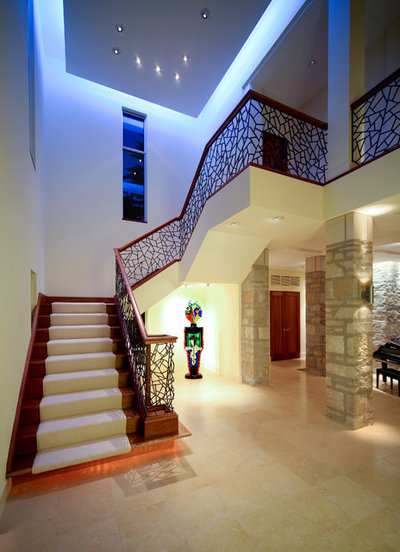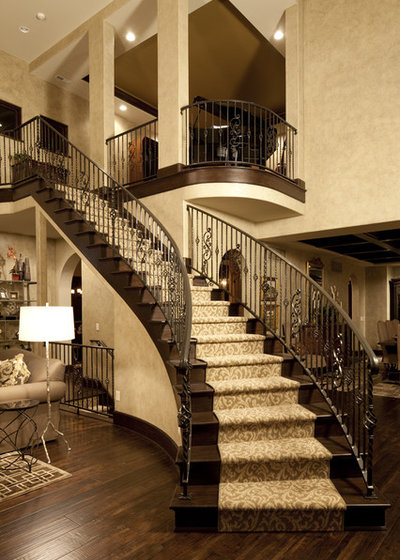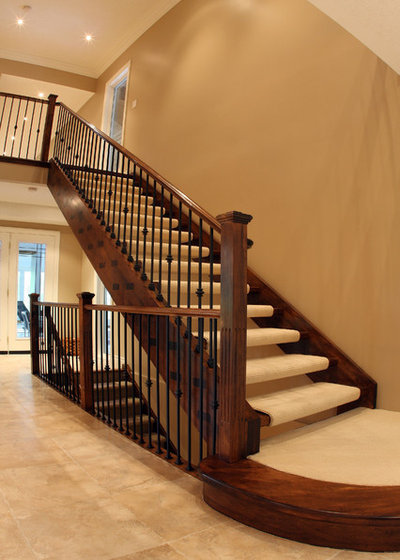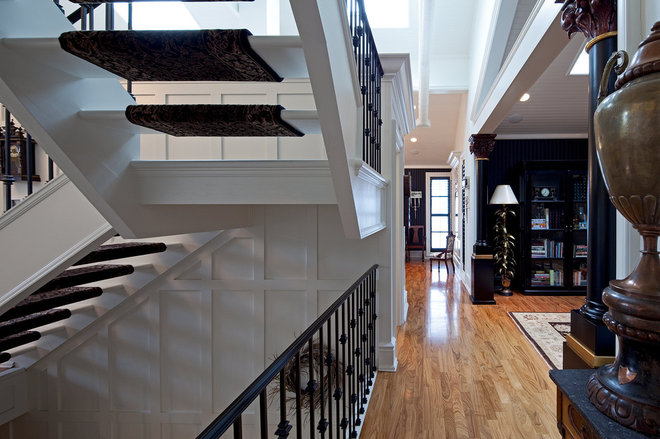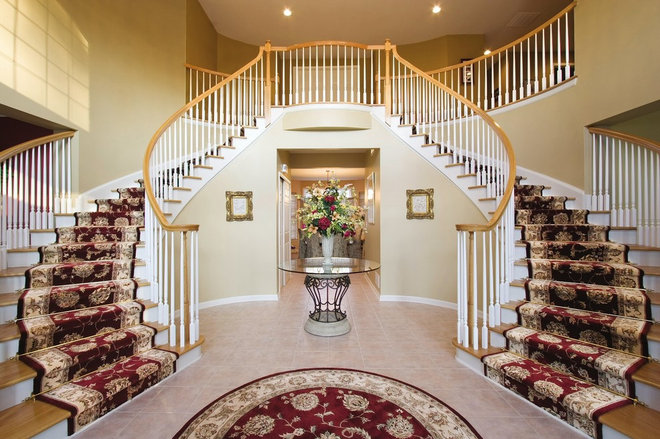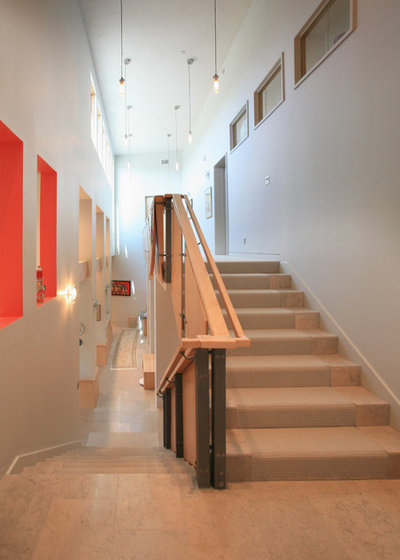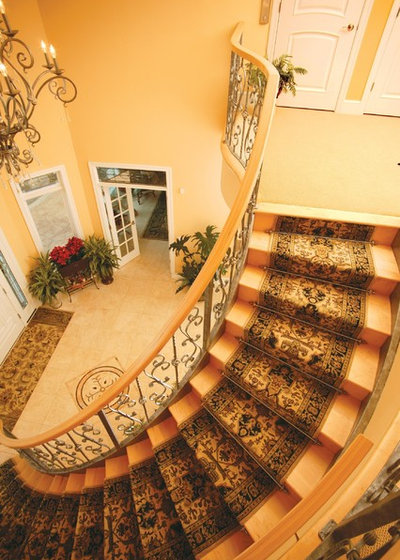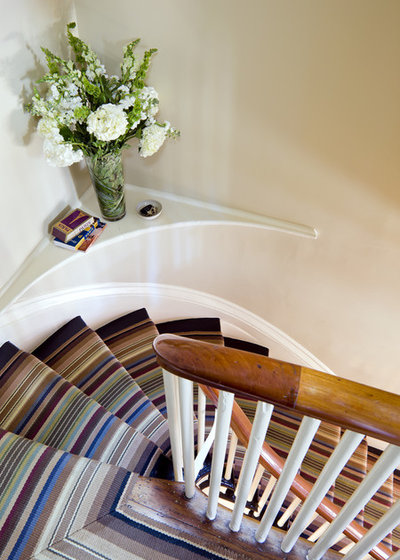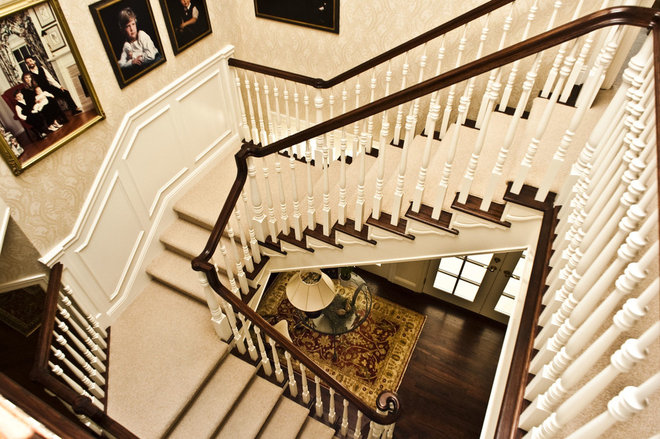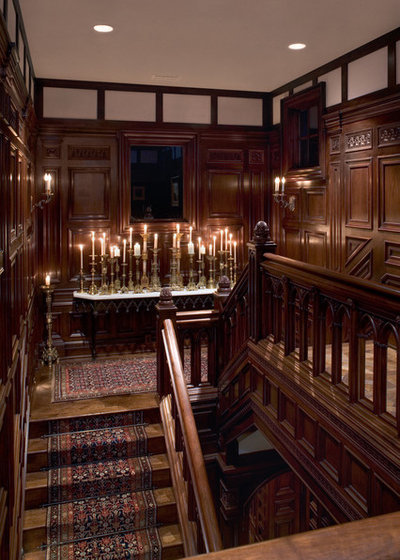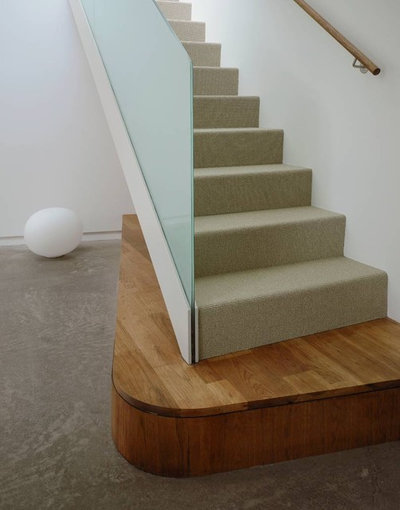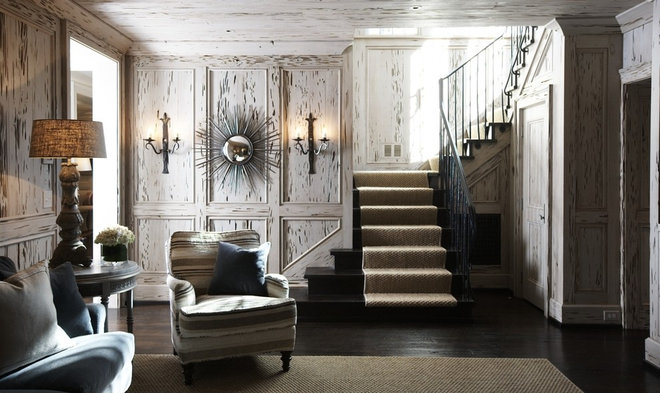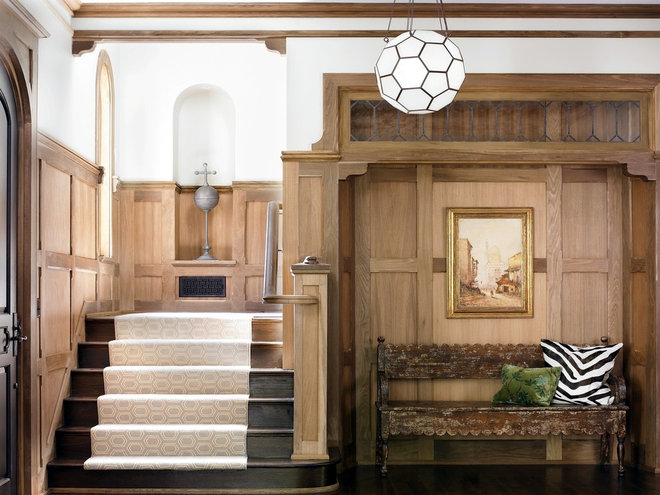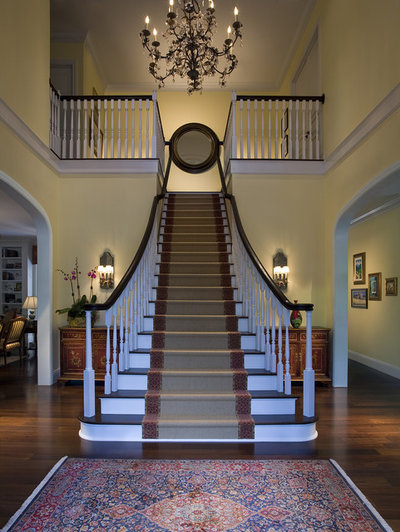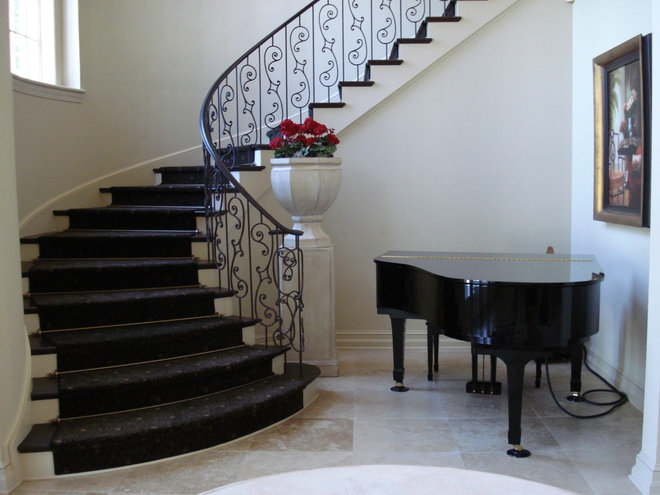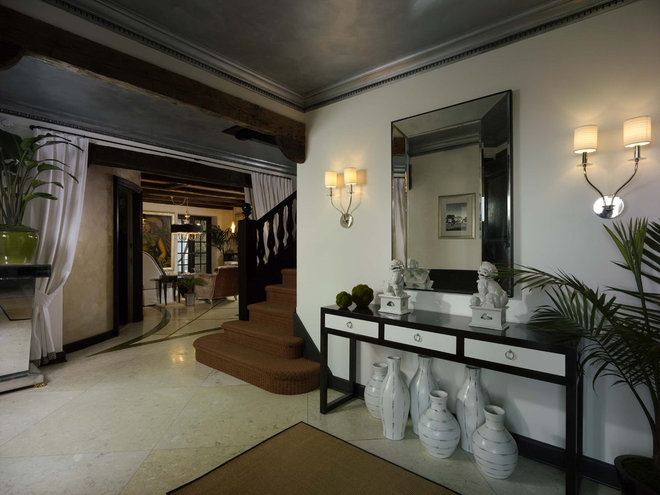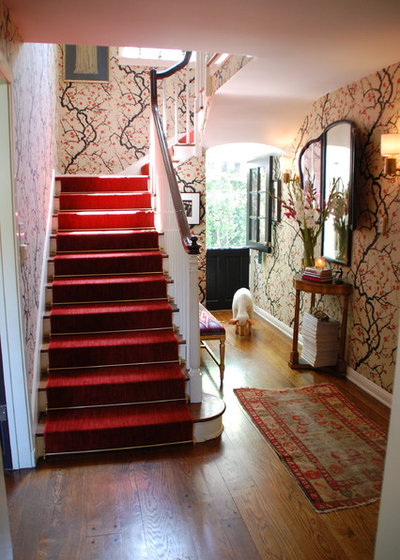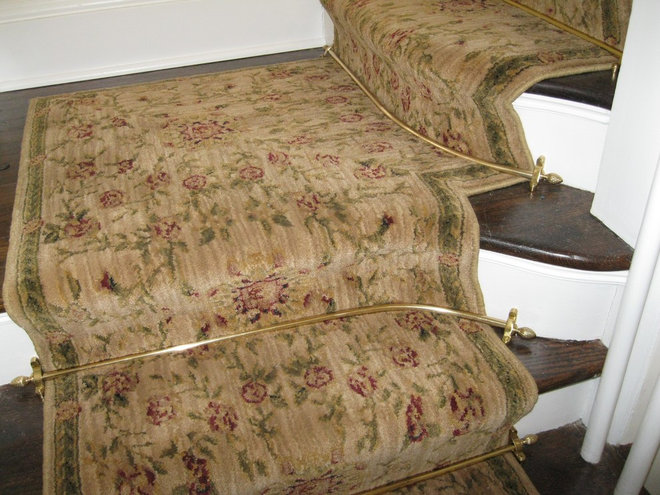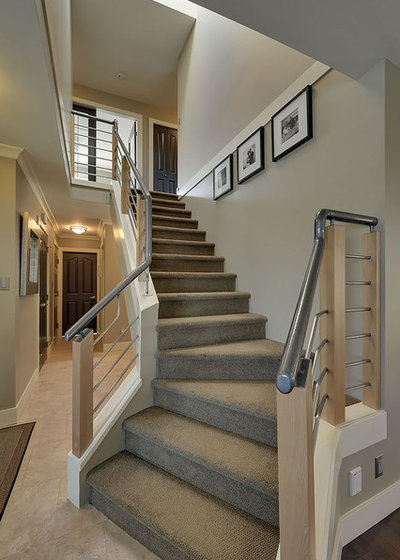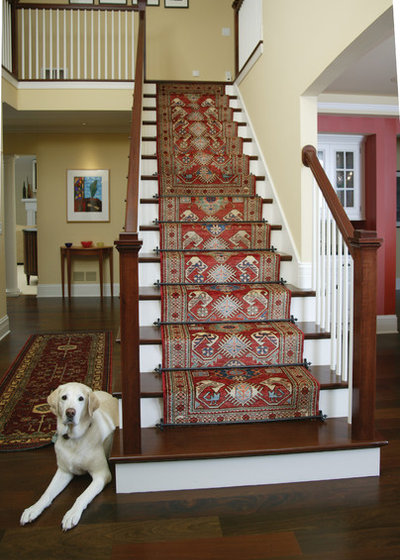Why, you should instal stair runners

Clack, clack, clack, clack, clack, clack — clomp, clomp, clomp, clomp, clomp, clomp! That should sound familiar if you have wood stairs and a couple of children. It is the sound of a younger child racing down the stairs, hotly pursued by an older sibling. That’s just to the middle landing. Then you hear bump, bump, aaaugh, bump, bump, kerthud — as they slip and take a tumble down that last set of stairs.
Bare wood stairs are beautiful, but they are very noisy. And if they are the highly polished type of wood, it is very easy to slip on them. I won’t describe to you the sound I made when I fell on my own bare wood stairs, because amid the slipping, bumping and crashing there was some colorful language.
Stair runners are a great solution to provide peace and quiet and added safety to your stairs. They can be understated or a real design element in their own right. Many of my clients have questions about stair runners, such as: how wide should they be, what to do at the landing, and where should the runner end? Take a look at these great examples of stair runners for all types of situations.
1. Where should the stair runner end? You have a few choices. In this photo, the stair runner ends just under the lip of the bottom tread. Look closely and you’ll notice that they ended it there because that stair has an overhang with lighting under it. At the top, they ended the runner at the back of the top tread. You’ll see more options in later photos.
2. How wide should the stair runner be? As a general rule of thumb, 4″ of bare wood on either side of the stair runner is usually aesthetically pleasing and still allows the runner to be wide enough to give you a comfortable path for walking. But you can vary this depending on the look you want for your stairs.
This staircase has a really large landing area, so instead of continuing the runner, the designer has used an area rug. Again, you can either match the area rug to the runner, or just have it coordinate.
Tip: Don’t forget to use non-slip pads under your area rugs. It is especially important when an area rug is not held down by heavy furniture.
Children aren’t the only reason you should consider using a stair runner on wood stairs. I will never forget how we removed worn carpeting from our wood stairs. To our dismay, we found that our older dog could no longer get up the stairs to our bedroom at night because he couldn’t get a grip on the more slippery wooden stairs. He would cry at the bottom of the stairs wanting to be with us. Oddly enough, we did not install a stair runner; we began sleeping downstairs. That’s just the weird kind of animal lovers we are. Anyway, having carpeting on your stairs makes them safer for your pets too.
I hope you have enjoyed the tips and can use them to create a beautiful and safe staircase for your home. I always love to see how people have handled these issues themselves, so please feel free to upload photos of your stair runners below!


 Free Delivery Anywhere in Canada
Free Delivery Anywhere in Canada